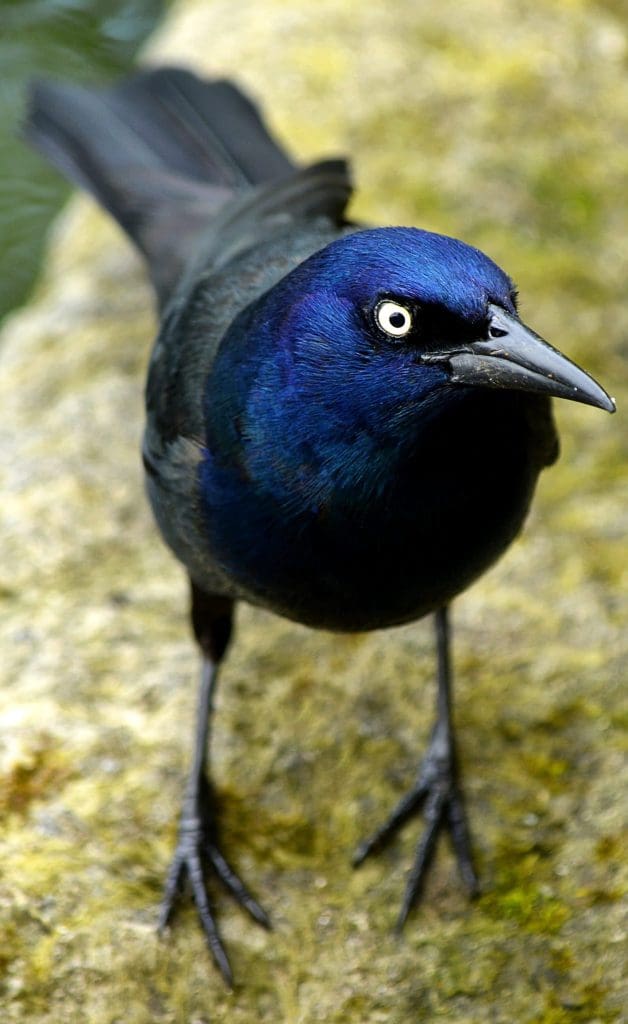Spring is a great time for observing birds anywhere in the Northern Hemisphere, and Boston is no exception. During this time of year we have the chance to see not only those birds that live here year-round, but also those passing through the city on their way to their summer homes. Spring is also when many birds exhibit some of their most interesting behaviors, since they’re busily singing and squabbling to attract mates, building their nests, and beginning to raise their young.
Boston’s abundant green spaces and coastal location help it to support a surprisingly large variety of bird species, including some that might not be expected in the center of a city. But if we think, again, of the city as a kind of habitat, and try to see it as a bird would, it can be easier to understand some aspects of its appeal.
No one has done this better than J.A. Baker, who in The Peregrine writes that "to hawks, these gritty country lanes must look like shingle beaches; the polished roads must gleam like seams of granite in a moorland waste. All the monstrous acts of man are natural, untainted things to them.”
In the same way, we can try to see the towering buildings of the financial district as cliffs, and thereby understand their appeal not only to the ubiquitous pigeons but also to those very Peregrines that prey upon them.
However, if you’re interested in getting out into the nice weather and seeing some other birds, the BPL has a variety of great resources to help you understand what birds you’re seeing, where to find them, and what their behaviors mean.
Guides to Identification and Behavior
For identifying birds in this area, the two perennial classics are undoubtedly The Sibley Field Guide to Birds of Eastern North America and the Peterson Field Guide to Birds of Eastern and Central North America:
However, these guides cover a pretty huge region, and a lot of the birds they contain will never (or almost never!) be seen here in Boston. So if you'd like something a little more compact, there are fortunately a couple of other excellent options. One is the newly published American Birding Association Field Guide to Birds of Massachusetts. It's not exhaustive, but it has clear photographs of some of the most commonly seen birds in the state and the best places and times of year to see them. Even more concise is Birds of Boston, which focuses just on birds often seen in the city itself.
To help you understand what the birds you see are doing, the The Sibley Guide to Bird Life & Behavior provides detailed descriptions of the general life history of each family of birds.
For more guides to bird identification and birdwatching methods, check out the booklists below:
These guides will help you identify the birds you're likely to see in Boston, Massachusetts, and New England.
Whether you're obsessed with raptors, warblers, or sandpipers, confused by the plumage stages of gulls, or seeking out rare sightings, there are specialized bird guides to help.
These guides will help you learn mental habits and practical techniques to confidently identify the birds you see.
Local Birdwatching News
For recent information on bird sightings and locations in the area, request the latest issue of Bird Observer from the Delivery Desk at the Central Library using the call number PER QL677.5.B57. The publication's website also includes a message board where people post interesting sightings they've made in Boston and other parts of the state.
Online Resources
eBird, from the Cornell Lab of Ornithology, is probably unrivaled for birdwatching information online, offering observation lists, maps of birdwatching locations, visualizations of observation data, and more.
The Bird List for the Commonwealth of Massachusetts, produced by the Massachusetts Division of Fisheries and Wildlife, offers an official record of all birds convincingly observed in the state.
Finally, for birds, the city can be not just a habitat, but also a danger, especially for migrating individuals not accustomed to urban environments, many of whom die in collisions with lit buildings at night. To combat this needless threat to bird life, Mass Audubon's Lights Out Boston initiative aims to encourage building owners to limit night lighting during migration seasons.



Add a comment to: Spring Birdwatching in Boston